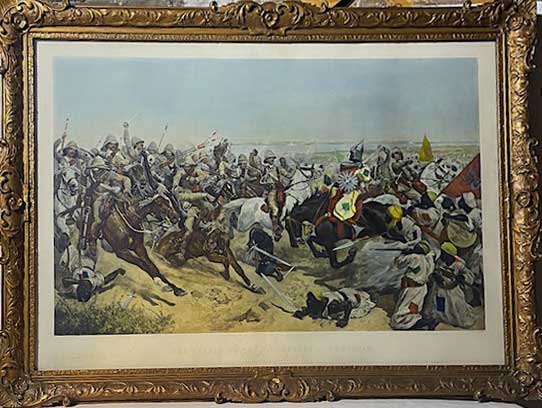Image size 36” x 25” Glazed, Ornate period gilt-wood and gesso frame 41” x 30”
Ref. GA1(212)/ANN / da.anar >LVL SOLD PRICE CODE C Click Here for Pricing
Details
Kitchener, was also seeking revenge for the death of General Gordon, who had been killed when a Mahdist army captured Khartoum thirteen years earlier.
On the morning of 2 September, some 35,000–50,000 Sudanese tribesmen under Abdullah attacked the British lines in a disastrous series of charges; later that morning the 350 men of the 21st Lancers charged and defeated another force of about 700 Dervishes that appeared on the British right flank. Among those present was 23-year-old soldier and reporter Lieut. Winston Churchill as well as a young Captain Douglas Haig. In fact, 2,000 tribesmen who had remained concealed in a deep gulley engaged the lancers in desperate hand-to-hand combat, as is vividly portrayed in this fine image.
The victory of the British–Egyptian force was a demonstration of the superiority of a highly disciplined army equipped with modern rifles, Maxim machine guns and artillery over a force twice its size armed with older weapons and marked the success of British efforts to reconquer Sudan.
The charge of the 21st. Lancers on 2nd. September 1898 was one of the last full-scale cavalry charges of the British Army.


